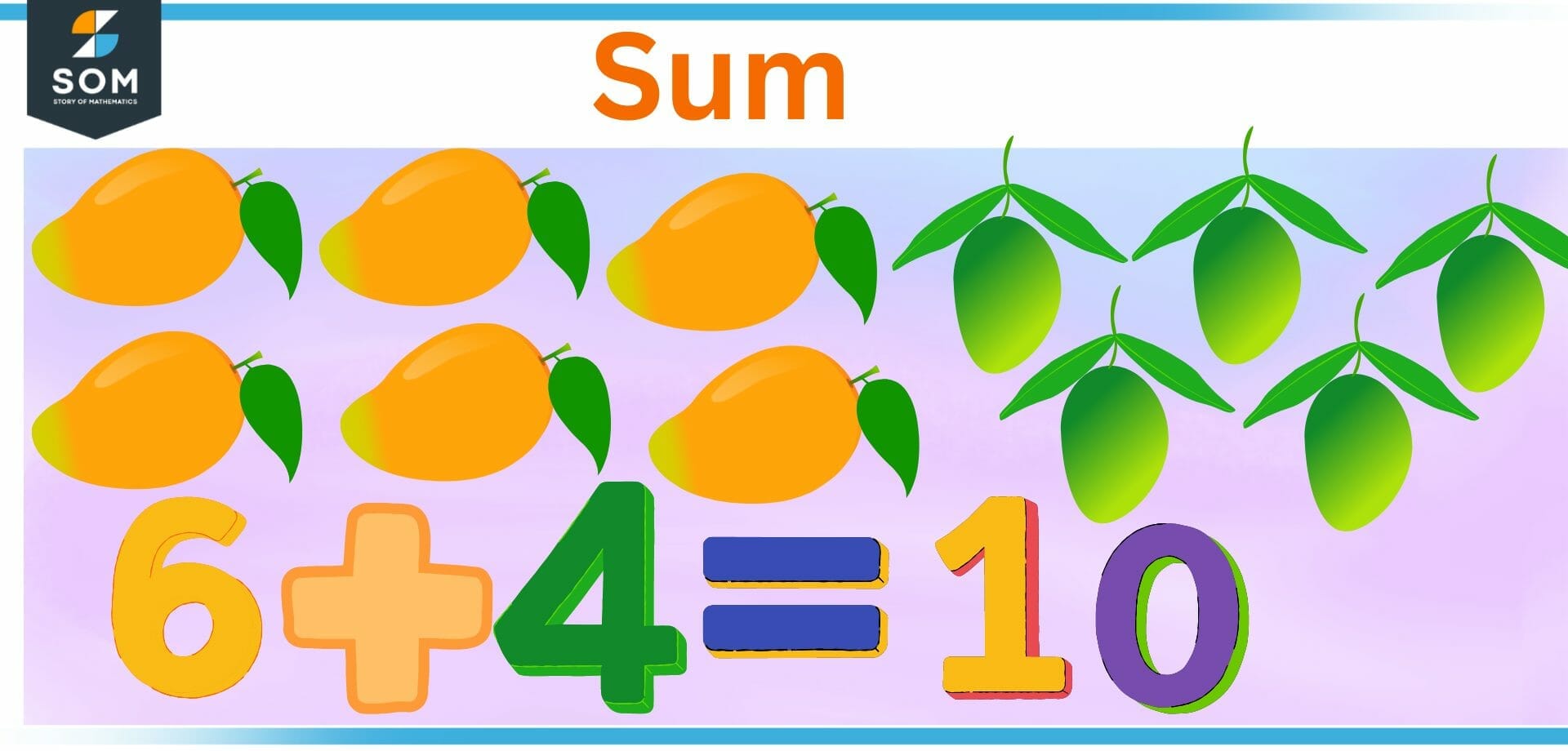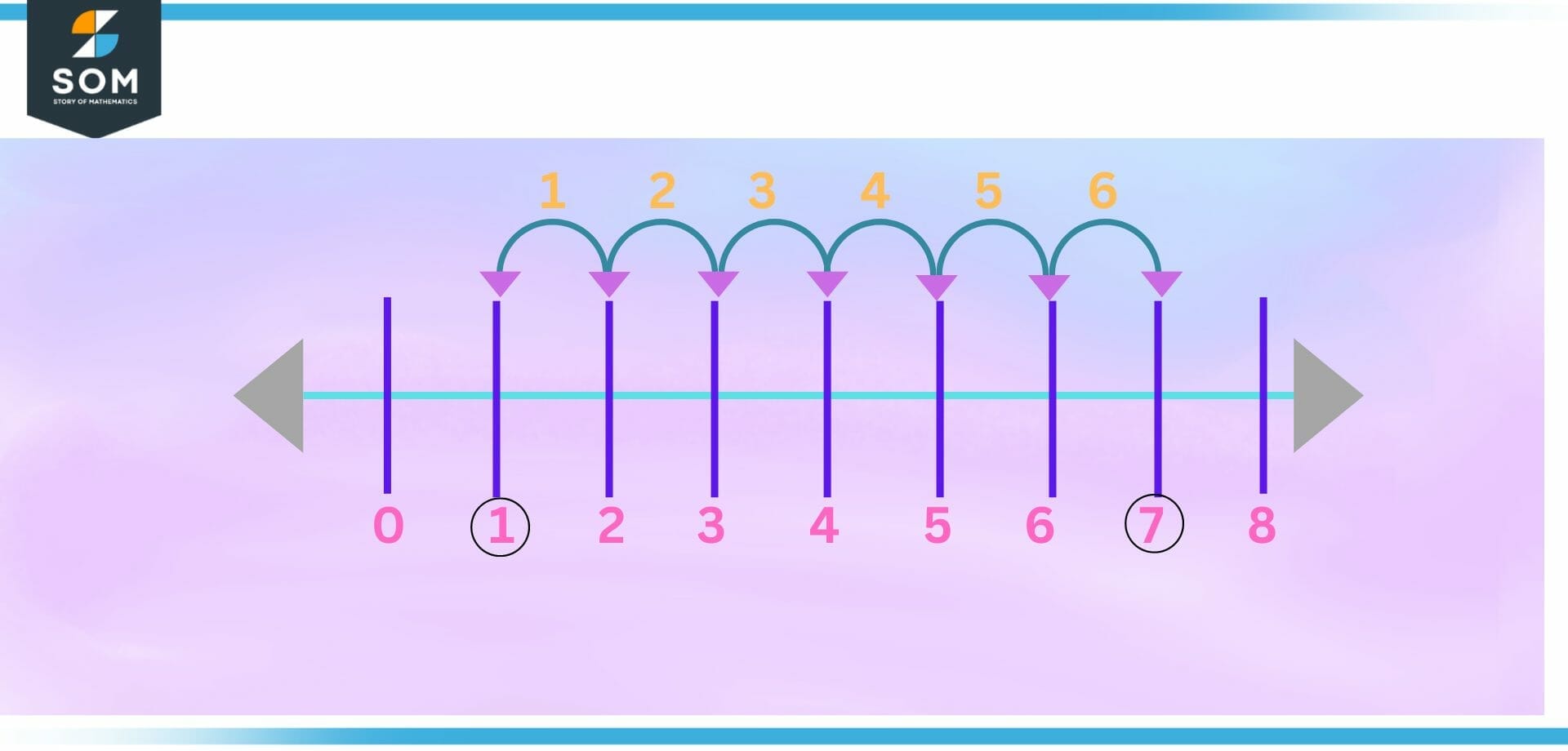JUMP TO TOPIC
Total|Definition & Meaning
Definition
Total is another word for sum and therefore represents the result of adding two or more numbers. In the standard form of the addition of numbers, the total (or sum) is written on the right-hand side of the equation, though this is not a fixed rule. For example, if there are three balls in a jar, and we add five more, the jar contains a total of 3 + 5 = 8 balls.
The outcome of adding together all of the individual values in a set is referred to as the total. Finding the Total, which stands for the overall value of the things that are being added together, is the goal of the addition process.
This idea is essential to the study of mathematics, and it has a wide range of applications in the real world, as will be demonstrated in the following sections of this article.

Figure 1 – Alternate Words For Total
What Is the Purpose of Finding the Total?
Finding the total value of a set of values is the goal of the addition process that yields the word “Total.” we can observe below how adding 6 yellow mangoes to 4 green mangoes yields a total of 10 mangoes. The process of adding together the various values in a set enables one to get the Total by adding all of the values together.
This is helpful in various applications, such as mathematical calculations, budgeting, inventory management, and sales analysis, to name just a few of them.

Figure 2 – Graphical Demonstration of Sum
The Total offers a single, condensed representation of the aggregate worth of the collection, which can be utilized for purposes such as comparison, analysis, or the formation of decisions.
The Significance of the Total in Mathematics
The “total” notion is a fundamental mathematical operation that is applied in a variety of different calculations, making it an essential component of the subject of mathematics. The total of a set of numbers gives a comprehensive representation of the data that can be utilized for further analysis and decision-making. This representation can be obtained by adding up a set of numbers.
When performing a variety of mathematical operations, like addition, subtraction, and multiplication, to name a few, totals are an essential component. The idea of a sum’s entirety is also essential to more sophisticated areas of mathematics, such as calculus and statistics.

Figure 3 – Sum on Number Line
The widespread usage of the total in a variety of different calculations, in addition to its role as a fundamental mathematical operation, is the primary reason for the total’s significance in the field of mathematics. It is an important tool for analyzing data and comprehending it, both of which are essential in a variety of fields, such as the sciences, the financial markets, and economics.
Different Kinds of Totals
There are many different kinds of totals, including the following:
- Sum: The sum is the amount that is obtained by adding all of the individual numbers together. It is utilized to ascertain the most important value inside a collection of data. It is the total that most people are familiar with and the most fundamental type.
- Count: The count refers to the total number of things that are included in a set. A total of this kind is computed in order to ascertain the number of items contained in a list or collection.
- Average: An average is a form of the total that is calculated by dividing the sum of a set of numbers by the number of items in the set.
- Maximum: The maximum is the value in a set of numbers that is the highest possible value. Its purpose is to identify the data point that contains the highest value possible.
- Minimum: The minimum is the value that is the least of all the numbers in a set. It is used to discover which value in a set of data is the lowest possible value.
- Mode: The mode is defined as the value that occurs most frequently in a given collection of numbers. A data set can have its most common value determined by employing this technique.
It is possible to make use of a variety of totals, depending on the kind of data being analyzed and the conclusions that are intended from the process. These sums are helpful in a variety of disciplines, such as mathematics, statistics, the financial industry, and data analysis.
Real-world Applications of the Total Function
The term “total” can be applied in a variety of contexts in real life, including the following:
- Budgeting: Budgeting In the process of budgeting, totals are utilized to calculate the aggregate amount of revenue and expenses. This information is used to construct a budget that is fair and balanced, as well as to make judgments about money that are well-informed.
- The management of inventory: When it comes to inventory management, totals are employed to keep track of the number of things that are currently in stock. This information is used to determine when inventory levels need to be managed more successfully and when new items should be ordered.
- Sales analysis: In sales analysis, totals are needed to determine a company’s total sales. Therefore, it’s important to keep track of them. Utilizing this information allows for the identification of patterns, the formulation of well-informed business decisions, and the assessment of the company’s overall performance.
When applied to real-world problems, the notion of the total is an extremely useful tool because it offers a comprehensive representation of the data that is required for accurate decision-making in areas such as financial planning, the administration of inventories, and the investigation of sales.
Various Methods To Compute the Total
There are a few different ways to determine the total, including the following:
- Calculation by hand: This approach involves performing fundamental arithmetic operations, such as addition and subtraction, in order to get the sum of a given group of numbers.
- Calculation of totals through the use of computer software: This approach entails the utilization of computer software, such as spreadsheets or specialist accounting software, in order to automate the process of calculating the sums. Calculation by hand is slower and less accurate than this method, which is especially helpful when dealing with huge data sets.
- Methods that combine manual and automated processes: This method involves calculating totals using a combination of human and automated processes. In the case of performing preliminary calculations, for instance, human methods could be used, whilst automated methods could be utilized to validate the results.
The technique of computing the total is determined by the type of data, the size of the data collection, and the level of precision that is sought. Each approach has a unique set of benefits and drawbacks, and the one that is best suited to a given circumstance will rely on the particular requirements of that circumstance.
Conclusion
In conclusion, the idea of the total is extremely important in mathematics, and it also has a number of important applications in the real world. Totals are utilized in a broad variety of sectors, such as budgeting, inventory management, and sales analysis. They provide a comprehensive picture of the facts, which is necessary for making decisions that are well-informed.
The ability of total to provide a summary of a set of numbers, which in turn makes it easier to examine and comprehend data, is the primary reason for its significance. Calculating the total can be done in a number of different ways, including manually, automatically through the use of software, or through a combination of both manually and automatically performed calculations.
In conclusion, the usage of the total is vital in a wide variety of sectors since it offers a thorough representation of the facts, which is essential in order to make educated judgments. It is a foundational notion in mathematics and continues to be a vital tool in a variety of industries, including finance, economics, and data analysis, amongst others.
Examples Involving Totals of Things
Example 1
What is the sum of four balls and five balls when added together?
Solution
The answer is 9. Since 4 plus 5 equals 9, there are a total of 9 balls.
Example 2
Sara’s grandmother resides in the village next to her. In order to get to her grandmother’s house, she had to cross a river.
She plans on bringing 12 kg of sugarcane, 8 kg of jaggery, and 7 kg of tomatoes along with her on the boat.
The greatest amount of weight that she can bring aboard with her is 35 kg.
Is it possible for her to bring all of them along with her on the boat?
Solution
It is necessary for us to determine the aggregate weight of the sugarcane, jaggery, and tomatoes.
12 kg is the weight of sugarcane.
The weight of jaggery is 8 kg
The weight of the tomatoes is 7 kg.
The total weight of all of these items = 12 kg + 8 kg + 7 kg = 27 kg
The maximum load the boat can handle is greater than 27 kg, so yes, she can bring all these items on board.
All images/mathematical drawings were created with GeoGebra.
